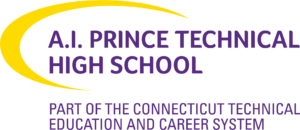Instructors
Kamfonik, Matthew
Department Head, Automotive Collision
Matthew.Kamfonik@cttech.org
(860) 951-7112 x5509
Program Description
Students enrolled in the automotive collision repair and refinishing program learn skills in most aspects of collision repair and auto body repair field including safety, tools and equipment, damage analysis, component replacement, sheet metal straightening and filling, welding, painting and refinishing, detailing, frame straightening, and mechanical systems.

